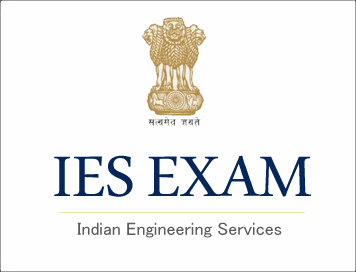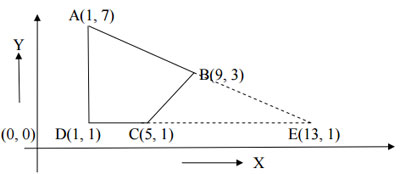
(Paper) General Studies and Engineering Aptitude Model
Question Paper for IES Exam - 2017
1. Five candidates A, B, C, D and E had written an examination and the
relationship between their marks was as follows:
- D scored twice as many marks as E.
- Marks obtained by C were equal to the average of those of A and
B.
- A scored 23 marks more than E
- B scored 5 marks less than D
If E scored 42 marks, then the marks of C were:
(a) 42
(b) 65
(c) 72
(d) 79
2. The UN Conference on Environment and Development, known as Rio Summit,
led to the final development of which international treaty?
(a) Kyoto Protocol
(b) World Environment Treaty
(c) Environment Treaty of the G8 Nations
(d) Universal Environment Treaty
3. Consider the following statements regarding definition of ‘moral’:
1. Being or acting in accordance with standards and precepts of goodness
2. Arising from conscience or a sense of right and wrong
3. A concisely expressed precept or general truth, a maxim
4. The principles of conduct governing an individual or a profession, standards
of behaviour
Which of the above statements are correct?
(a) 1, 2, 3 and 4
(b) 1, 2 and 4 only
(c) 3 and 4 only
(d) 1, 2 and 3 only
4. In a project, in which four roads A, B, C and D were to be completed:
- A was not completed first
- B was not completed last
- C was completed ahead of D
- D was not completed last
Then, which road was completed last?
(a) B
(b) A
(c) C
(d) D
5. Consider the following statements regarding the responsibilities of the
National Securities Depository Limited (NSDL):
1. To keep an electronic record of ownership of shares
2. To supplement electronic trading by introducing the concept of electronic
scrips
3. To facilitate physical delivery of securities
4. To facilitate transmission of shares
Which of the above statements are correct?
(a) 1, 2 and 3
(b) 1, 3 and 4
(c) 1, 2 and 4
(d) 2, 3 and 4
6. Consider the following statements regarding safety in workplace:
1. It attracts visitors and tourists
2. It enhances the profit margin
3. It provides comforts and confidence in workers
Which of the above statements is/are correct?
(a) 1 and 3 only
(b) 2 and 3 only
(c) 3 only
(d) 1, 2 and 3
7. The sales figures of a small company are listed as follows:
| Year |
2011 |
2012 |
2013 |
2014 |
2015 |
| Sales (in units) |
85000 |
87500 |
90100 |
92810 |
95625 |
What would be the sales projection (in units) for the year 2016?
(a) 98575
(b) 98545
(c) 98510
(d) 98475

8. What is the area of quadrilateral ABCD shown below?

(a) 12
(b) 28
(c) 36
(d) 38
9. Consider the following statements:
1. An organization can function efficiently only if a formal authority system
exists. This has to be strengthened by informal bases of power and influence to
bring in effectiveness.
2. Cooperation of supporting officials depends on the senior’s range of
knowledge, experience and leadership abilities.
3. If one’s own actions or examples, directly or indirectly, cause a change in
the behaviour or attitude of another person or group, this is called
influencing.
4. Requiring compliance with instructions without being able to influence is
tantamount to power vested in the one who instructs.
Which of the above statements conform to ethical practice?
(a) 1, 2 and 3 only
(b) 1, 2 and 4 only
(c) 3 and 4 only
(d) 1, 2, 3 and 4
10. Which of the following are classifiable as non-destructive testing
methods?
1. Harness testing
2. Liquid penetrant method
3. Magnetic particle inspection
4. Concrete test hammer
Select the correct answer using the codes given below:
(a) 1, 2 and 3 only
(b) 1, 2 and 4 only
(c) 3 and 4 only
(d) 1, 2, 3 and 4
11. The main purpose of preventive maintenance of construction equipment
is to:
(a) Prevent or delay failure
(b) Reduce repair time
(c) Allow for easy servicing
(d) Remedy minor defects
12. Consider the following steps which are used while solving the design
problems:
1. Analyze and select optimum solution
2. Identify the problem and gather pertinent information
3. Test and implement the solution
4. Generate multiple solutions
What is the correct sequence of order for the design process?
(a) 2, 1, 4 and 3
(b) 1, 4, 3 and 2
(c) 2, 4, 1 and 3
(d) 1, 4, 2 and 3
13. Consider the following:
1. Flood moderation
2. Flow channelization
3. Bank protection
4. Sediment control
Which of the above are relevant in the design of river training works?
(a) 1 and 3
(b) 1 and 4
(c) 2 and 3
(d) 2 and 4